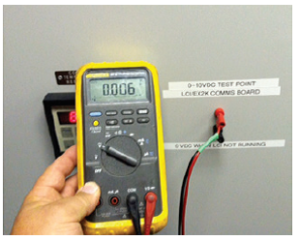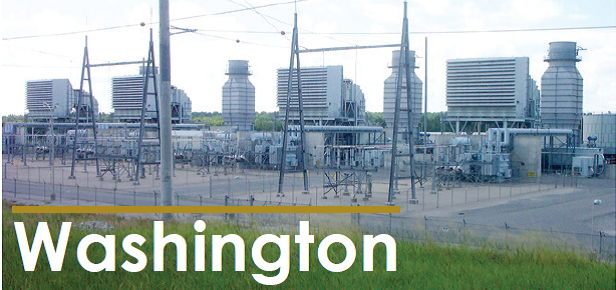Test points added increase LCI start reliability
Challenge. Washington County Power is located in a remote area with heavy lightning storms which have shorted out LCI communications boards twice in the past two years, preventing the plant from starting on time.
The facility is a simple-cycle peaking plant consisting of four GE 7FA gas turbines sharing two LCIs through cross-connects for starting. The two LCIs communicate through auxiliary I/O boards in each LCI via a shielded cable. This communication link enables the plant to start any unit from either of the LCIs if necessary. If one auxiliary I/O board fails, it negatively affects the board in the second LCI, preventing the starting of any turbines and causing a forced outage.
The auxiliary I/O board is located under a PLC rack on the inside back wall of the LCI electrical cabinet, an area that’s difficult to access. The only way to check the board is to climb down into the LCI cabinet with a volt meter and a flashlight.
 Solution. Plant personnel looked at options to identify the best ways to check the auxiliary I/O boards. After meeting with production manager the decision was made to install test ports into the door of the LCI cabinet. These test ports were wired into the LCI communications board to enable technicians to check board quickly and safely from outside the cabinet (photo).
Solution. Plant personnel looked at options to identify the best ways to check the auxiliary I/O boards. After meeting with production manager the decision was made to install test ports into the door of the LCI cabinet. These test ports were wired into the LCI communications board to enable technicians to check board quickly and safely from outside the cabinet (photo).
Results. Adding test ports to the door of the LCI cabinet enables plant technicians to check voltage quickly and safely to determine the status of auxiliary I/O boards after storms. This easy check has been added to the prestart checklist and has proved to be an effective solution.
Project participants: Derek Boatright, Ralph Chandler, Robert Riddle, Joe Vaughn, and Larry Shearouse.
Troubleshooting tool for intermittent problems
Challenge. The staff at our facility deals with the same challenges that many others do at their plants. One of these is how to efficiently identify and repair intermittent problems. Intermittent issues from plant equipment, like those that create an alarm and then strangely disappear, can be very difficult to track down and correct.
In addition to the challenge of the sporadic nature of such problems the staff also had to contend with:
- Long periods with little or no turbine operation.
- Technicians working different shifts.
- Lean staff covering two separate plants and 12 turbines.
Personnel found that they were often “starting over” with troubleshooting steps when an intermittent problem occurred because no one could remember what was done prior.
Solution. Their solution was the creation of a troubleshooting log. This is a log that is kept on the control room computer and gives a running account of the issue. It is a collection point for pertinent troubleshooting information such as date, technician, what was done, as left condition, and recommendations on next steps if problem recurs.
Results. The creation of the troubleshooting log has been a big success and has helped eliminate rework by making details of prior troubleshooting activities available to all technicians.
Project participants: Ralph Chandler, David Boatright, and Joe Vaughn.
Washington County Power LLC
Owned by Southeast PowerGen, LLC
Operated by Consolidated Asset Management Services
605-MW, gas-fired, four-unit, simple-cycle peaking facility located in Sandersville, Ga
Plant manager: Mike Spranger



